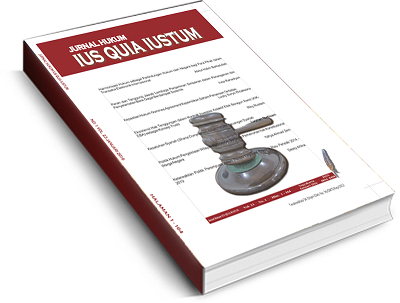Main Article Content
Abstract
This Research is studying the supervisory of regional law product between Government and Local Government in Republic of Indonesia. The focus of the study is the consistency and concordance of Local Government Law, Tax Law and Regional Retribution with the 1945 Constitution of Republic of Indonesia under the scope of regional law product supervisory in addition to the concordance of the implementation of the regional law product cancellation during 2002-2006. The research method is law research with statute and historical approaches. Meanwhile, the analysis method is qualitative descriptive analysis. This research resulted in some findings that: first, The Central Government in the context of Republic of Indonesia, based on the 1945 Constitution has the obligation to control the local government units of Provinces, Municipality Regions, and Cities. The central government controls the law norms stated by Local Government through the law products only with the purpose for the objective national’s interest. Second, the central government (executives) should have not been given the authority to asses and cancel the Regional Law as regulated in Law No 32 / 2004, based on the fact that it is against the higher level laws and regulations (peraturan perundang-undangan), as such authority is owned by Supreme Court. Third, of all the 554 regional law products cancelled by Internal Affair, none of the cancellations can be done at the targeted time as already regulated by Law No 22 / 1999 jo Law No.34 / 2000 ( one month after the local regulation is accepted) and Law No. 32 / 2004 (sixty days after the local regulation is accepted).
Key word: Inspection, regional law product, unitary country
Article Details
Authors who publish with this journal agree to the following terms:
a. Authors retain copyright and grant the journal right of first publication with the work simultaneously licensed under a Creative Commons Attribution License that allows others to share the work with an acknowledgement of the work's authorship and initial publication in this journal.
b. Authors are able to enter into separate, additional contractual arrangements for the non-exclusive distribution of the journal's published version of the work (e.g., post it to an institutional repository or publish it in a book), with an acknowledgement of its initial publication in this journal.
